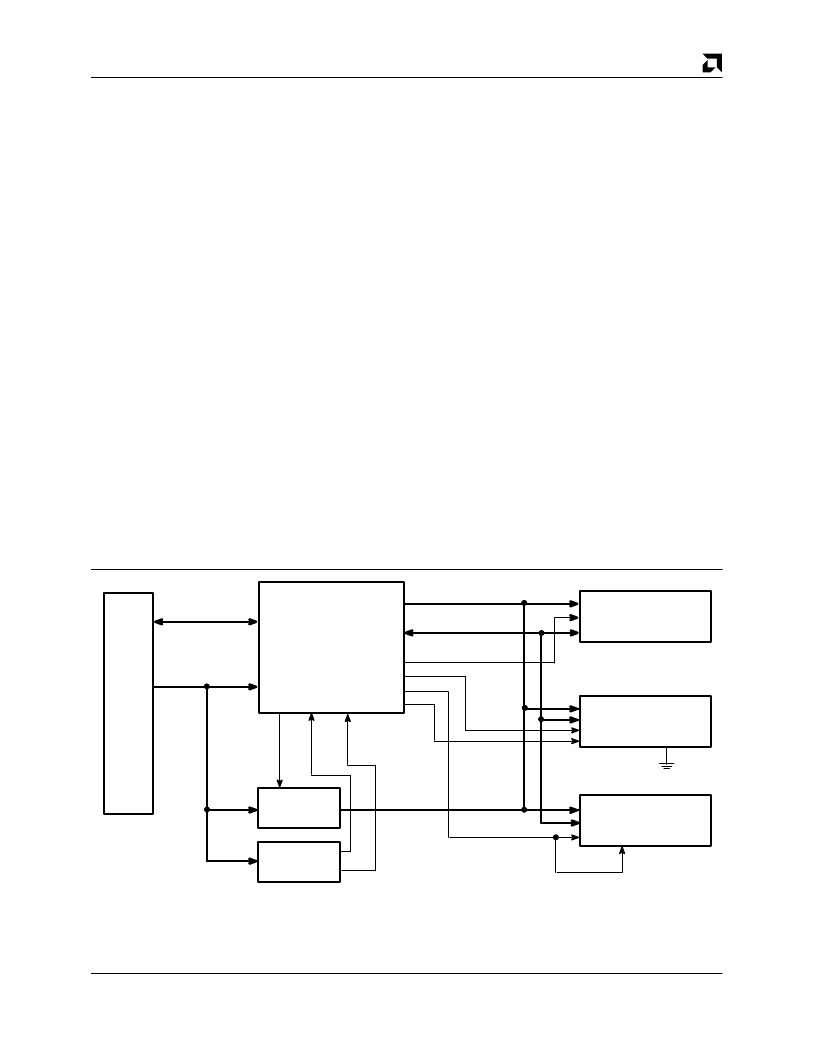- 您現(xiàn)在的位置:買賣IC網(wǎng) > PDF目錄366550 > AM79C960KCW (ADVANCED MICRO DEVICES INC) PCnetTM-ISA Single-Chip Ethernet Controller PDF資料下載
參數(shù)資料
| 型號(hào): | AM79C960KCW |
| 廠商: | ADVANCED MICRO DEVICES INC |
| 元件分類: | 微控制器/微處理器 |
| 英文描述: | PCnetTM-ISA Single-Chip Ethernet Controller |
| 中文描述: | 2 CHANNEL(S), 10M bps, LOCAL AREA NETWORK CONTROLLER, PQFP120 |
| 封裝: | PLASTIC, QFP-120 |
| 文件頁數(shù): | 31/127頁 |
| 文件大?。?/td> | 814K |
| 代理商: | AM79C960KCW |
第1頁第2頁第3頁第4頁第5頁第6頁第7頁第8頁第9頁第10頁第11頁第12頁第13頁第14頁第15頁第16頁第17頁第18頁第19頁第20頁第21頁第22頁第23頁第24頁第25頁第26頁第27頁第28頁第29頁第30頁當(dāng)前第31頁第32頁第33頁第34頁第35頁第36頁第37頁第38頁第39頁第40頁第41頁第42頁第43頁第44頁第45頁第46頁第47頁第48頁第49頁第50頁第51頁第52頁第53頁第54頁第55頁第56頁第57頁第58頁第59頁第60頁第61頁第62頁第63頁第64頁第65頁第66頁第67頁第68頁第69頁第70頁第71頁第72頁第73頁第74頁第75頁第76頁第77頁第78頁第79頁第80頁第81頁第82頁第83頁第84頁第85頁第86頁第87頁第88頁第89頁第90頁第91頁第92頁第93頁第94頁第95頁第96頁第97頁第98頁第99頁第100頁第101頁第102頁第103頁第104頁第105頁第106頁第107頁第108頁第109頁第110頁第111頁第112頁第113頁第114頁第115頁第116頁第117頁第118頁第119頁第120頁第121頁第122頁第123頁第124頁第125頁第126頁第127頁

P R E L I M I N A R Y
AMD
1-373
Am79C960
Shared Memory Mode
System Interface
The Shared Memory mode is the other fundamental op-
erating mode available on the PCnet-ISA controller. The
PCnet-ISA controller uses the same descriptor and
buffer architecture as the LANCE, but these data struc-
tures are stored in static RAM controlled by the
PCnet-ISA controller. The static RAM is visible as a
memory resource to the PC. The other resources look
the same as in the Bus Master mode.
The Boot PROM is selected by an external device which
drives the Boot PROM Address Match (
BPAM
) input to
the PCnet-ISA controller. The PCnet-ISA controller can
perform two 8-bit accesses from the 8-bit Boot PROM
and present16-bits of data. The shared memory works
the same way, with an external device generating
Shared Memory Address Match and the PCnet-ISA
controller performing the read or write and the 8 to 16-bit
data conversion.
Converting shared memory accesses from 8-bit cycles
to 16-bit cycles allows use of the much faster 16-bit cy-
cle timing while cutting the number of bus cycles in half.
This raises performance to more than 400% of what
could be achieved with 8-bit cycles. Converting boot
PROM accesses to 16-bit cycles allows the two memory
resources to be in the same 128 Kbyte block of memory
without a clash between two devices with different data
widths.
Note that the external address buffer must drive all the
bits of PRAB10-15 even if the static RAM is less than
64 Kbytes. The PCnet-ISA controller uses an internal
address comparator to perform SRAM prefetches on
the Private Data Bus; the PRAB0-15 signals are used in-
ternally to determine whether a SRAM read cycle
prefetch is a match or a miss.
Access to the Ethernet controller registers, board con-
figuration registers, and Address PROM is done with
on-chip address comparators.
Network Interface
The PCnet-ISA controller can be connected to an IEEE
802.3 network via one of two network interface ports.
The Attachment Unit Interface (AUI) provides an
IEEE 802.3 compliant differential interface to a remote
MAU or a transceiver on the system board. The
10BASE-T interface provides a twisted-pair Ethernet
port. The PCnet-ISA controller provides three modes of
network interface selection: automatic selection, soft-
ware selection, and jumper selection of AUI or
10BASE-T interface.
In the automatic selection mode, the PCnet-ISA control-
ler will select the interface that is connected to the
network by checking the Link Status state machine. If
both AUI and 10BASE-T interfaces are connected, the
10BASE-T interface is selected over AUI. If the
PCnet-ISA controller is initialized for software selection
of network interface, it will read the PORTSEL [1:0] bits
in the Mode register (CSR15.8 and CSR15.7) to deter-
mine which interface needs to be activated. For jumper
selection of the network interface, the MAUSEL pin is
used. When the XMAUSEL bit in ISACSR2 is set, a
HIGH on the pin will select the 10BASE-T interface, and
a LOW on the pin will select the AUI interface.
ISA
Bus
16-Bit System Data
System
Address
PCnet-ISA
Controller
16-Bit Private Address Bus
Ethernet
Address
PROM
8-Bit
SRAM
16907B-6
Address
Buffer
Address
Compare
Boot
PROM
OE
8-Bit Private Data
CS
D0–7
CS
E
ABOE BPAM SMAM
A0–X
D0–7
A0–X
SRWE
A0–X
D0–7
OE
WE
PRAB0–15
PRDB0–7
BPCS
SROE
APCS
CS
Shared Memory Block Diagram
相關(guān)PDF資料 |
PDF描述 |
|---|---|
| AM79C961AKCW | PCnet ⑩-ISA II Jumperless, Full Duplex Single-Chip Ethernet Controller for ISA |
| AM79C961AKC | PCnet ⑩-ISA II Jumperless, Full Duplex Single-Chip Ethernet Controller for ISA |
| AM79C961A | PCnet ⑩-ISA II Jumperless, Full Duplex Single-Chip Ethernet Controller for ISA |
| AM79C961AKIW | PCnet⑩-ISA II Jumperless, Full Duplex Single-Chip Ethernet Controller for ISA |
| AM79C961AVCW | PCnet⑩-ISA II Jumperless, Full Duplex Single-Chip Ethernet Controller for ISA |
相關(guān)代理商/技術(shù)參數(shù) |
參數(shù)描述 |
|---|---|
| AM79C961 | 制造商:未知廠家 制造商全稱:未知廠家 功能描述:Am79C961 - PCnet-ISA+ Jumperless Single-Chip Ethernet Controller for ISA |
| AM79C961/AM79C961A | 制造商:未知廠家 制造商全稱:未知廠家 功能描述:Using the Am79C961/Am79C961A (PCnet-ISA+/PCnet-ISA II) Survival Guide? 134KB (PDF) |
| AM79C961A | 制造商:AMD 制造商全稱:Advanced Micro Devices 功能描述:PCnet⑩-ISA II Jumperless, Full Duplex Single-Chip Ethernet Controller for ISA |
發(fā)布緊急采購,3分鐘左右您將得到回復(fù)。